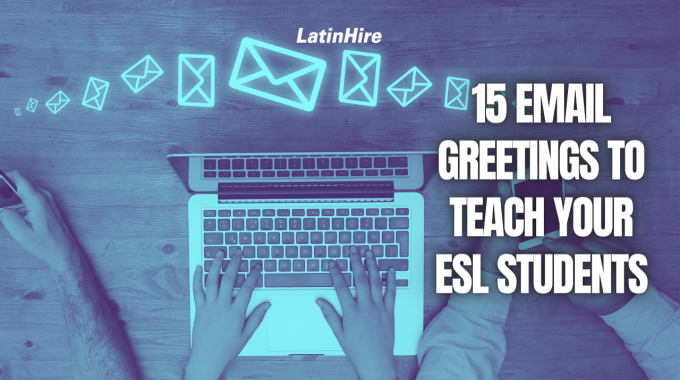Prepositions are some of the most commonly used words in the English language, but also…

7 Tips for Teaching True Beginner Language Learners
Have you ever come across a student who doesn’t speak a word of the language you’re teaching? When they can’t get past “hello”, and you also don’t speak their native language, it can be quite frustrating for both you and the student. So how can you ensure these students are getting something out of your class while having a good time regardless of the language barrier?
Here are 7 tips to help you teach true beginner language learners who don’t speak a word of the target language.
1) Make use of the chat box and whiteboard.
Students who are starting out with learning a new language are often a lot better at reading than listening. Although they may not be able to understand what you say, they could possibly understand better if you type it out.
On whatever platform you are teaching on, there will be a chat box option available. Some platforms, like Zoom, can allow you to annotate directly on the shared screen. So if you are giving instructions of any kind or want to make sure all your students understand something, type it out in the chat box or on the shared screen as you’re giving the instructions verbally.
2) Keep Google Translate open in a different tab.

Google Translate will be your best friend in classes where you don’t speak the students’ language and students don’t speak the language you’re teaching. Any instructions you give, you can translate those and paste the translation in the chat box or on the shared screen. Ask your students to take notes of any new words or phrases you give them so that in the next class, you won’t have to use the translations.
Google Translate also comes in handy if students want to write something to you in their native language. Ask them to type what they want to say in the chatbox and you can quickly copy (ctrl+c) and paste (ctrl+v) the text into Google Translate. Then, you can teach them how to say that phrase in the target language.
3) Use as many images as you can.
Visual imagery is the common language that we all share. Your students may not know the target language word for “apple” but they sure know what an apple looks like. Use Google to look up images related to the lesson and incorporate them as frequently as you can. If you teach with the camera on, you can also use gestures and facial expressions to enhance your students’ understanding.
If you already know ahead of time that you’ll be teaching true beginners, prepare your visuals in advance and start with teaching basic vocabulary and pronunciation. by incorporating many visuals in your lesson, you may not even need to use translations!
4) Use bilingual teaching materials.
When teaching students who don’t speak a word of the target language, you can start off with using bilingual teaching materials. It could be dialogues that are in both their target and native language so they can use the translations as a guide as well as learn new words and phrases.
There are also many bilingual children’s books that you can use in your classes as they tend to have simpler words with pictures. There is an application called Beelinguapp which has bilingual short stories that you can read together with your students.
5) Give students a list of the most common words.

It will be very helpful for your students to have a list of the most common words in their target language. You can either provide them with the translations, or ask them to look up the translations for homework.
Since a large percentage of everyday conversation in any language is made up of the most common few hundred words, giving your students a list will serve as their language foundation. It may be a good idea to use flashcards to help them remember these words.
6) Create a list of sentence starters.
Provide your students with sentence starters so they can have a guide to structure their ideas. All they have to do is fill in the blanks or complete the sentence with what they want to express.
For example:
– “What does ___ mean?”
– “How do you say ___ in English?”
– “I like to ___.”
– “Where can I find ___?”
These sentence starters should be phrases that students can use often and in different settings. You can ask your students to keep a small notebook of sentence starters so they can refer to it whenever they need to say or ask something in English.
7) Give students time to think and process.

True beginner language learners need time to process what they’ve learned. You don’t want to disrupt them while they’re thinking so make sure to give them time to think. However, silence can also mean that students did not understand the instructions. So, ask your students to repeat to you what the instructions are and explain to them that you’ll give them a certain length of time (e.g. a minute) to think about their response before sharing.
We hope these seven tips will help you in classes with true beginner language learners! If you have any other ideas, share them in the comments below!



